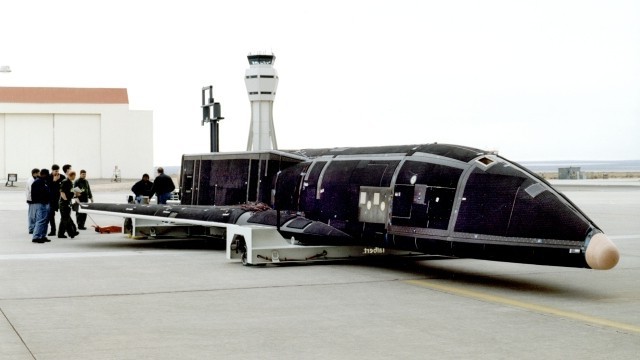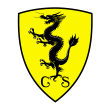 |
|
The X-3*/LittleStar is the 2nd stage of our Two-Phase-To-Suborbit (TPTS) and Two-Stage-To-Orbit System (TSTO) system, which be- longs to the worldwide most cost-effective, simplistic and environ- mental friendly solutions for space travels into suborbit and even much higher into Low Earth Orbit (LEO). Our spaceplane has the po- tential to revolutionize how to execute space operations in general by making them more aircraft like and adding in the capability for returnable plug-and-play tasks, like experiments and services for our customers. It also offers interesting commercial and private space travel options, inclusive our amazing tethered space walking, for which the Little Star was designed as well just right from the start.
The X-3*/LittleStar is based on highly reliable and inexpensive off- the-shelf technologies, which were developed in many of the NASA, DARPA and U.S. Air Force as well as by Ontonics™, the OntoLab™ and us led and conducted projects in the fields of Space Transport- ation System (STS), Reusable Launch Vehicle (RLV), Space Maneuv- er Vehicle (SMV), Approach and Landing Test Vehicle (ALTV) and Orbital Test Vehicle (OTV), like our STS RLV Space Shuttle Next Generation X-3033/MagicStar, NASA RLV Space Express, Lockheed Martin and partners RLV X-33, Orbital Sciences, Rockwell and part- ners RLV X-34, Boeing and partners SMV X-40A, ALTV X-37A and OTV X-37B, and Orbital Sciences RLV X-42, but also Hybrids and Airships.
Two-Phase-To-Suborbit System
The Two-Phase-To-Suborbit (TPTS) system consists of a High-Alti- tude Airship (HAA) catamaran, the Akron 3, as the 1st stage, that takes-off vertically and lifts a rocket based spaceplane, the X-3*/ LittleStar, as the 2nd stage to an altitude of around 65,616 feet/ 20,000 meters ("Sweet Spot") where the spaceplane is decoupled from the airship and its worldwide unique thrust vectoring High Per- formance Rocket™ engine is ignited to launch the spaceplane. The X-3*/LittleStar then accelerates to a speed of more than Mach 5 and soars to a height that exceeds 330,000 feet/100,000 meters (Kármán line/"Edge of Space"), and after the enjoyment of the al- most weightlessness of the suborbit for around 30 minutes the X-3* /LittleStar glides back to Earth.

A further option is to take a carrier aircraft instead of an airship as the 1st stage, like it is presented by the company Orbital Sciences with its aircraft L-1011/Stargazer.
Two-Stage-To-Orbit System
The X-3*/LittleStar is fundamentally designed for flights into Low Earth Orbit (LEO) by the same Two-Stage-To-Orbit (TSTO) system configuration and operation like the Space Transportation System (STS) Space Shuttle: Attached to two High Performance Rocket™ boosters and an external fuel tank, dock with a space station in the same way like the Space Shuttle does with the International Space Station (ISS), and land on a runway like an airplane does. In this way it is easy to understand why we nicknamed the LittleStar™ spacecraft Little Space Shuttle™ and Space Shuttle Junior™. But luckily there is also a difference to the Space Shuttle Mark 2: Due to the small dimensions of the LittleStar spaceplane we've the advant- age, that the whole launch system can be integrated and prepared in a horizontal position and then turned up in the vertical for the launch, like it was intended with the RLV X-33/VentureStar and if needed.
Very Cost-effective
The very cost effectiveness of our solution for flights into suborbital regions and Low Earth Orbit (LEO) is achieved by several reasons:
The components of the TPTS and TSTO systems are based on available off-the-shelf or in government-sponsored projects devel- oped technologies. This can be seen best with the LittleStar, that is also known as Little Space Shuttle or Space Shuttle Junior, and its High Performance Rocket™ engines, for example.
To take an airship or a carrier aircraft as the 1st stage in the use case as a TPTS system means, that this first phase of a launch is slower. But by the slow speed the cost of a launch is significantly reduced, because low-technologies can be applied and fewer pro- pellants are needed. Even better, the first phase is exactly the time when a launch system needs the most of its propellant to overcome the gravity. In this way our system most effectively saves propellant when most of the propellant is needed.
Biofuels can be applied as propellant for both 1st stage versions.
Also, the airship can be powered by solar energy and/or fuel cells, while the carrier aircraft can be powered by biofuels, for example.
Even the application of our Liquid Oxygen on the Fly™ system can be applied to produce needed oxygen for a fuel cell or a rocket en- gine of the 2nd stage, and/or the manoeuvering in the LEO. Moreov- er, such additional systems have not to be built into the spaceplane, but into the airship or the carrier aircraft.
Our High Performance Rocket™ engines are constructed by follow- ing a design philosophy that is based on a highly reduced overall system complexity, using off-the-shelf components (example given turbomachineries of business jet engines, if possible) and applying low-cost industry standard materials with efficient fabrication proc- essing techniques (for example for the nozzles), as well as heighten- ing their safety and environmental friendliness. As needed, liquid ro- cket models, which are powered by LOX/LH2, LOX/RP-1, LOX/EtOH, N2O/LH2, N2O/RP-1, N2O/EtOH or other propellant mixtures, can be used instead of or together with hybrid rocket models, which use N2O/HTPB as propellant, for example.
Furthermore, our High Performance Aerospike™ engines, that as liquid rocket models are based on the NASA→Marshall (Space Flight) Center MC-1/Fastrac 60K and Rocketdyne aerospike rocket engines, work optimally in all altitudes, which results again in a drastical low- er consumption of propellant (theoretically of up to 35%) and by this in an always appreciated weight reduction of an aerospace vehicle.
All of these said optimizations have effects to the dimensions of the airship, the carrier aircraft and the spaceplane, which means that they can be constructed in smaller, lighter and/or more powerful versions.
But the air launch from an airship or a carrier aircraft also reduces drastically the cost of safeness as well, because related emergency systems can be construct in a less complex way, and much more time and possibilities to abort a launch in the case of a failure are available. For example: If the rocket engine doesn't start, then the X-3*/LittleStar simply glides back to Earth.
The fundamental concept of the spaceplane also reduces signific- antly the complexity of the turnaround cycle. Repairing the vehicle after the flight and preparing it for a new launch can be conducted in a timely and cost-effective manner, which is also a result of the horizontal preparation and integration strategy.
And a further aspect is often forgotten in conjunction with space launch systems: The cost of a rocket launch site or spaceport. With our both TPTS systems you only need a normal runway, and for the HAA version an area with the size of 2 football fields and the permi- ssion to start an airship from this place. If in the latter case these few requirements are fulfilled, then the hangars for the airship elem- ents and the spacecraft can be set up in a handful of our hours, and the space fun begins.
Images




Specification
Design exterior: NASA, Orbital Sciences, Rockwell and partners, an unknown artist and Style of Speed
Design interior: Style of Speed
Stages: 2
Engine: High Performance Rocket engines
Vmax: Mach 8 at 64,000 m/210,000 ft
Further Informations
This is an actual project. Interested persons can contact us day and night.
|
|
|






